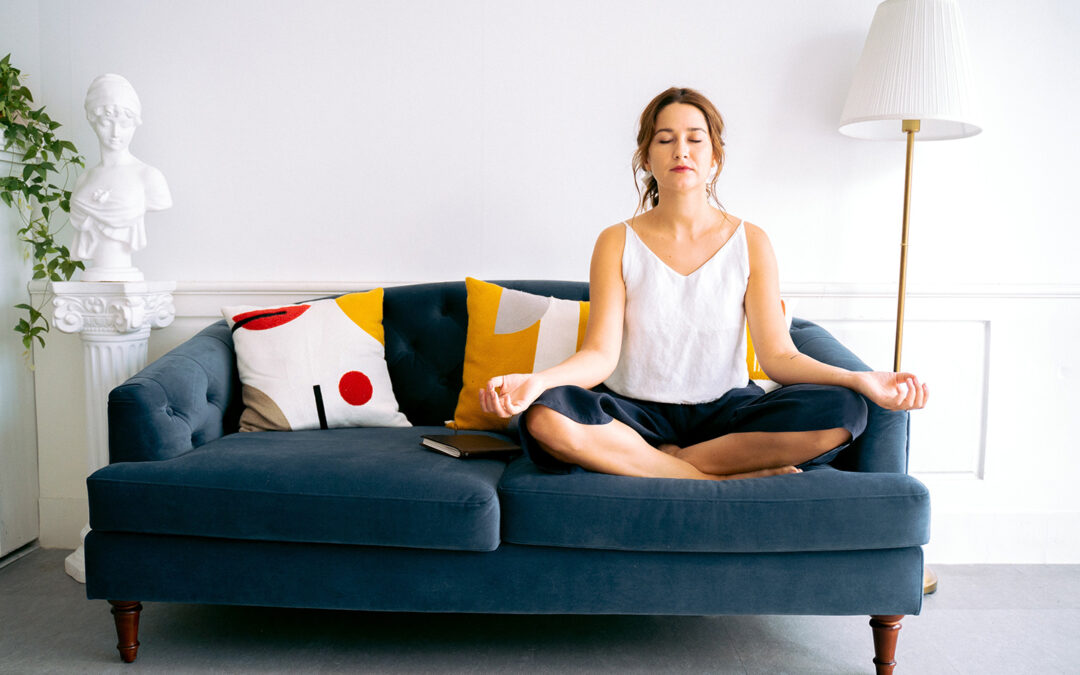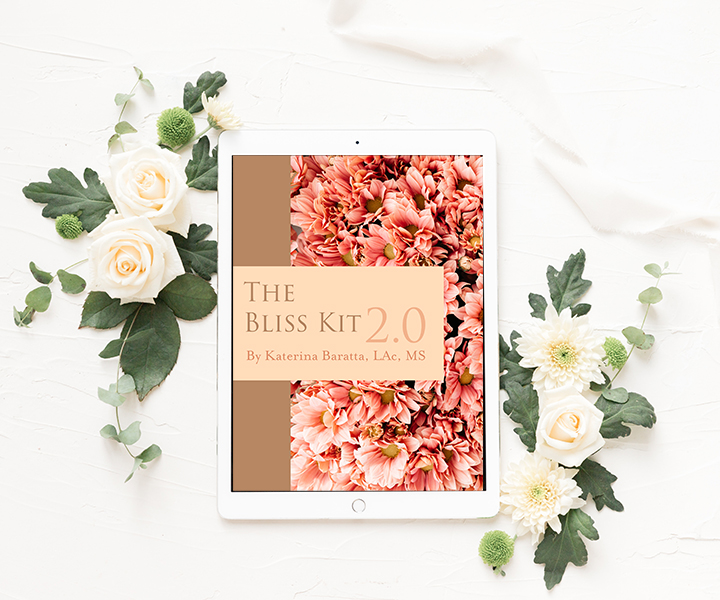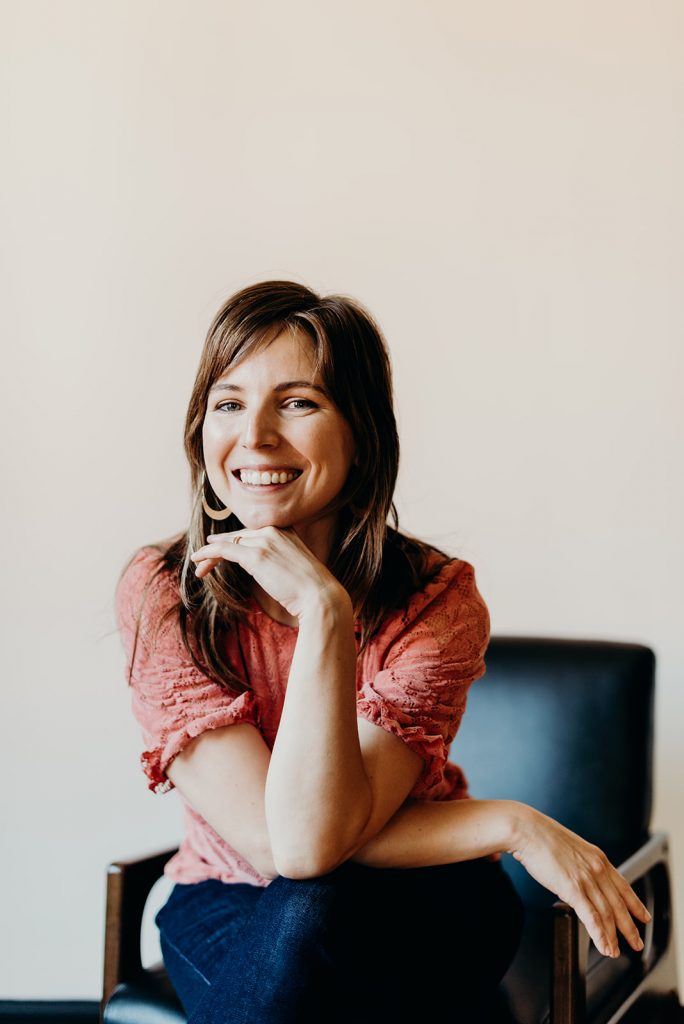Meditation for Anxiety
One of the most widely recommended natural strategies to combat anxiety is meditation.
And with good reason.
If you enter “meditation for anxiety” into the PubMed search bar and you’re going to find more than 600 studies, most of which demonstrate extremely promising results.
But all meditation is not created equal.
Different types of meditation have different effects.
And some types of meditation work better than others when it comes to healing anxiety.
In fact —shocker!— sometimes meditation can actually increase stress and anxiety before it becomes helpful.
These are important factors to consider if you want to start using meditation for anxiety.
In this article we’re going to talk about the 7 most common forms of meditation for anxiety.
- Breath focus meditation
- Mantra meditation
- Loving-kindness meditation
- Body-scan meditation
- Emotional release meditation
- Moving meditation
- And mindfulness meditation
We will discuss what they are, how to do them, and why they help.
And then we’re also talk about some of the challenges that can come up when using meditation for anxiety, why they come up, and what to do if you feel like meditation isn’t working for you.
1. Breath Focus Meditation for Anxiety
Breath focus meditation is the first meditation technique most people learn.
And it really is as simple as it sounds.
Generally it’s recommended that you sit in a quiet comfortable place, close your eyes, and just focus on your breath.
A misconception here is that this technique is supposed to silence your thoughts, and thereby calm anxiety.
But honestly, that’s probably not going to happen.
At least not at first.
Sure, there may be moments when the chatter moves into the background, or even stops.
But silencing the voices in your head isn’t the point, nor is it how this meditation technique is going to help you with anxiety.
Breath focus meditation helps anxiety in other ways.
First off, it trains your brain to focus, which slows down your thoughts so you don’t ruminate as much.
Secondly, and even more importantly, this technique helps you observe and let go of your thoughts as they arise.
And when you don’t get caught up in the stories your thoughts are telling you, you feel a lot less anxious.
Breath focus meditation can also be helpful in calming your nervous system.
Because when you feel stressed or anxious, your sympathetic nervous system kicks in, making your breath quick and shallow.
This is not to be confused with pranayama, or breathing exercises that are designed to change the pattern of breath and move energy through the body.
Those can be extremely helpful in healing anxiety as well, but that’s not what we’re talking about here.
In breath focus meditation, the breath automatically slows and deepens on its own, without you consciously doing anything to change it.
And when your breath slows and deepens, it activates your parasympathetic nervous system’s rest and digest mode.
For some people, however, breath focus meditation can increase anxiety because it brings awareness to the places in the body that hold stress and trauma.
When this happens, a person might feel like they can’t take a deep enough breath, or like they’re hyperventilating.
If this is happens to you, other forms of meditation like mindfulness or moving meditation are better options to start.
Once that stress pattern starts to move and release, you’ll be able to sit and focus on your breath with a lot more ease.
You can read more about what to do if breathing makes you anxious here.
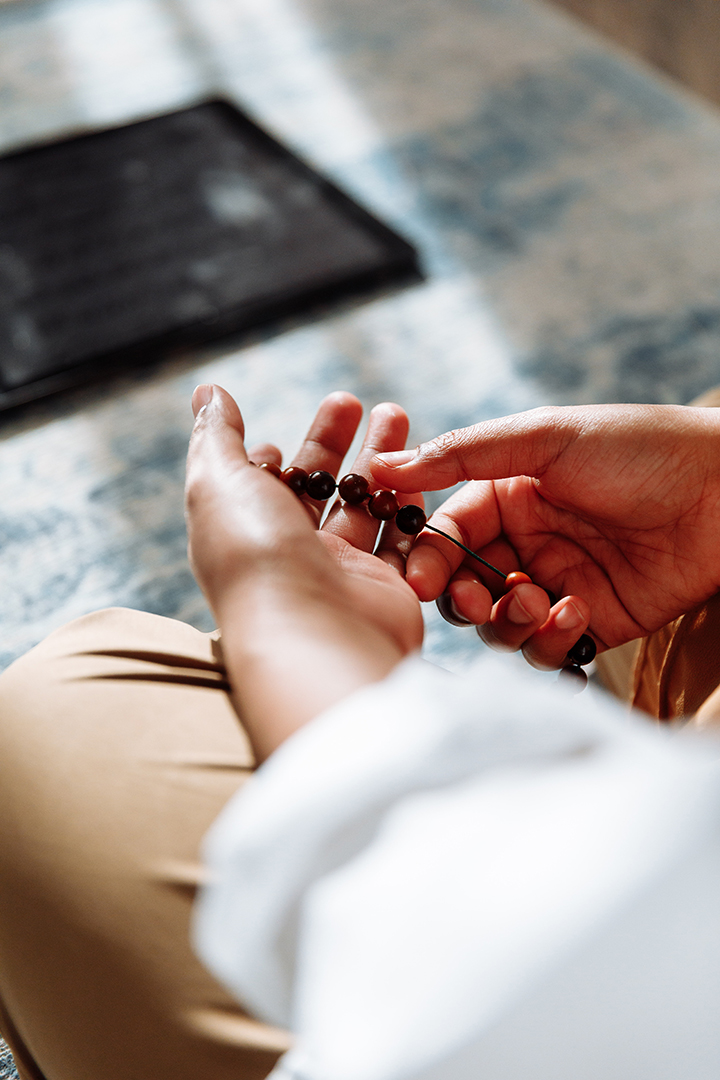
2. Mantra Meditation for Anxiety
Mantra meditation is similar to breath focus meditation, but instead of focusing on the breath you repeat a word or saying (a “mantra”).
Just as with breath focus meditation, when you notice your thoughts come in, you acknowledge their presence, gently let them go, and bring your focus back (in this case to the mantra).
One of the most popular forms of mantra meditation is called Transcendental Meditation, and in this method a trained teacher gives you a personal mantra to repeat.
But you can also use mantra on your own.
Some people use affirmations as mantras.
Here are some examples you can try out if you want to:
• “I am love, lovable, and loving.”
• “I can do hard things.”
• “Let it go.”
• “Go with the flow.”
• “Everyone and everything I meet is a manifestation of God.”
• “I am in the Universe, the Universe is in me, I am one with the Universe.”
Others prefer to use traditional mantras in Sanskrit, Chinese, or other ancient languages.
This is because it is believed that the repetition of those exact sounds taps into an established and powerful energy stream cultivated over hundreds or thousands of years of use.
Her are some examples:
• “So hum” translates to I am, or I am that I am.
It is the most quintessential mantra to meditate on.
Many enlightened masters have taught that if you do nothing else, contemplate your own being, and this mantra is a great tool to get you there.
“So hum” is also a good mantra to pair with breathing meditation.
The “So” sounds like the inhale and can be repeated silently our out loud as you breathe in, and “hum” can go with the exhale in the same way.
• “Om mani padme hum” translates to “hail the jewel of the lotus” and is thought to help cultivate compassion.
This may be because lotus flowers grow in mud, which demonstrates to us that beautiful things can come out of difficult or undesirable situations.
• “Aum” or “Om” is about as simple as mantras get.
It is said to be the sound of all the energy in the universe distilled into one sound.
You can also repeat other single words as mantras.
The 5 mantras technique, for example, suggests that you meditate on the following 5 words individually for one minute each before moving on to the next: Release; Peace; Tranquility; Love; and Joy.
Try it out right now.
Feel how each word elicits a different reaction in your body.
Mantras can reverberate on the deepest levels of the psyche.
Over time, the right mantra can make a huge impact on your mental health and capacity to show up for life the way you want to.
And in terms of calming anxiety specifically, mantras can help you cultivate a calm center.
They serve as anchor point for you to come back to when the world around you feels overwhelming.
And the more you use a mantra, the more you will find this to be true.
3. Loving-Kindness Meditation for Anxiety
Popularized in the western world in large part by the work of Sharon Salzberg, loving kindness meditation is similar to some mantra meditations, specifically the ones aimed at increasing compassion.
When we first hear about loving kindness meditation, the first thought is usually that it must increase compassion toward others.
But loving kindness meditation is just as much about increasing compassion toward your own human form.
And loving kindness meditation has been studied extensively by researchers.
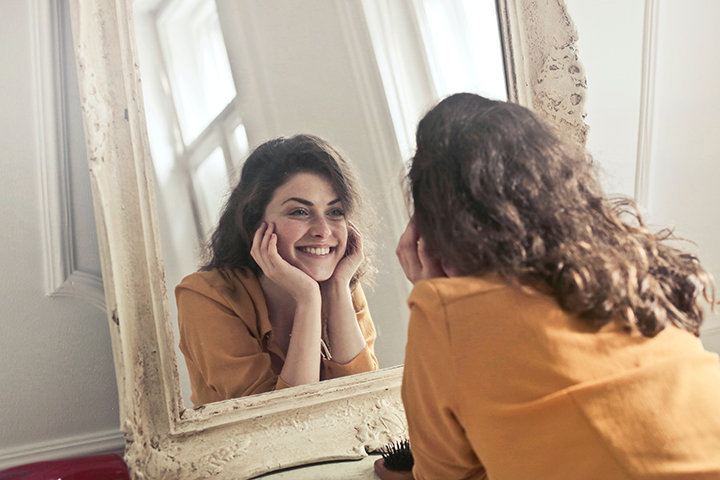
In addition to helping calm anxiety, here are just some of the benefits it has been shown to have:
• Increase positive emotions
• Increase vagal tone
• Support both physical and emotional healing
• Reduce pain
• Help you be a more open and helpful person. (1)
As with all forms of meditation, the exact technique will depend on the practitioner.
The way I like to practice loving kindness meditation is to start by offering it to myself.
It can be helpful to imagine someone who you are close to, who loves you very much, or even just a kind stranger extending these wishes toward you:
May I be healthy.
May I be happy.
May I be free of suffering.
Repeat this maybe 3-5 times, or whatever feels good to you.
Then move on and extend these wishes towards someone you love very much (it can be the same person you imagined for the first bit.)
May you be healthy.
May you be happy.
May you be free of suffering.
Repeat as often as you did for the first round.
Then move on to someone you feel fond of, or neutral toward.
Someone like a bus driver you see often, the cashier you had last time you went to the grocery store, or one of your kids’ teachers.
May you be healthy.
May you be happy.
May you be free of suffering.
(BTW, if you want to you can do this for more than one person in any of these categories.)
The next one’s a bit harder but that much more impactful.
You’re going to visualize someone who you dislike this time.
Maybe it’s your ex, the bestie who betrayed you, an annoying landlord, or a politician who actively promotes policies that stand against everything you believe in.
Do your best to genuinely extend these wishes toward them, too.
May you be healthy.
May you be happy.
May you be free of suffering.
And finally, you’re going to extend this wish to all beings everywhere.
May all beings everywhere be healthy.
May all being everywhere be happy.
May all beings everywhere be free of suffering.
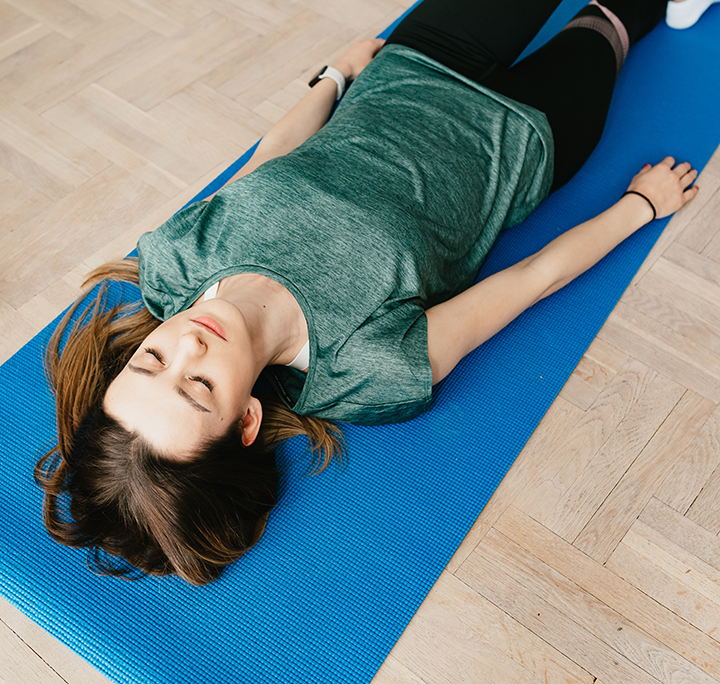
4. Body Scan Meditation for Anxiety
A body scan meditation is quite different from the other forms we’ve covered so far.
Very often, this form of meditation is guided, meaning a voice outside of your own head is talking you through it.
And this is why a lot of people who feel intimidated by other forms of meditation like to start here.
When done right, a body scan mediation can be extremely helpful in healing anxiety.
Because anxiety is a response to stress that has been stored in the body from the past.
A body scan meditation can help you recognize where these stress patterns (or trauma) are stored in your body and where.
And the ability to shine a light on these places where energy is blocked in your body is the first step to letting that energy clear out.
In order to release this stress and heal anxiety, the next step after recognition is to learn how to feel safe fully feeling and physically expressing what you’re feeling.
A body scan meditation usually stops short before this step, but sometimes it does happen.
Overall, the effectiveness of a body scan meditation will depend on the practitioner guiding you and your own level of willingness and readiness.
At its best, a body scan meditation will help you transform trauma and heal the deepest, most vulnerable parts of you.
But even if you don’t have a life-altering experience, a typical body scan meditation will serve to relax your nervous system so your body stops sending you so many alarm signals.
And over time, this can help you calm anxiety much more easily.
5. Emotional Release Mediation for Anxiety
Emotional release meditations are similar to body scan meditations but they take it one step further.
Because instead of just noticing where tension and emotions are stored in the body, an emotional release meditation will then guide you to move that energy so it no longer causes anxiety.
Sometimes this is done through visualization, sometimes through breath, and sometimes through movement.
Different things work for different people at different times.
So if you don’t feel any different after trying one style of emotional release meditation for a while, see if you can try another.
You might also find that one method works wonders for you for a while and then “stops working”.
This is normal, and actually doesn’t necessarily mean that form of meditation isn’t helpful to you anymore.
All it means is that you’ve healed one layer and are having a new experience now.
So you can stick with the same method or try a new one.
Quiet your mind, tap into your intuition, and listen for guidance.
You won’t be lead astray.
If you’d like to get started with a guided emotional release meditation, Rebecca Lane of Breathe People has one of the best one’s I’ve come across.
And if you feel restlessness or stuck in some way, shaking might be even more helpful.
Click here to learn more about shaking for emotional release.
6. Moving Meditations for Anxiety
Moving meditation is a term that encompasses many different forms of meditation.
Yoga, tai chi, qigong, and walking meditations all fall under the umbrella of moving meditation.
Like body scan meditations, moving meditations shift your awareness from your mind into your body.
And like emotional release meditations, moving meditations help to move the stuck energy in your body that is leading to anxiety.
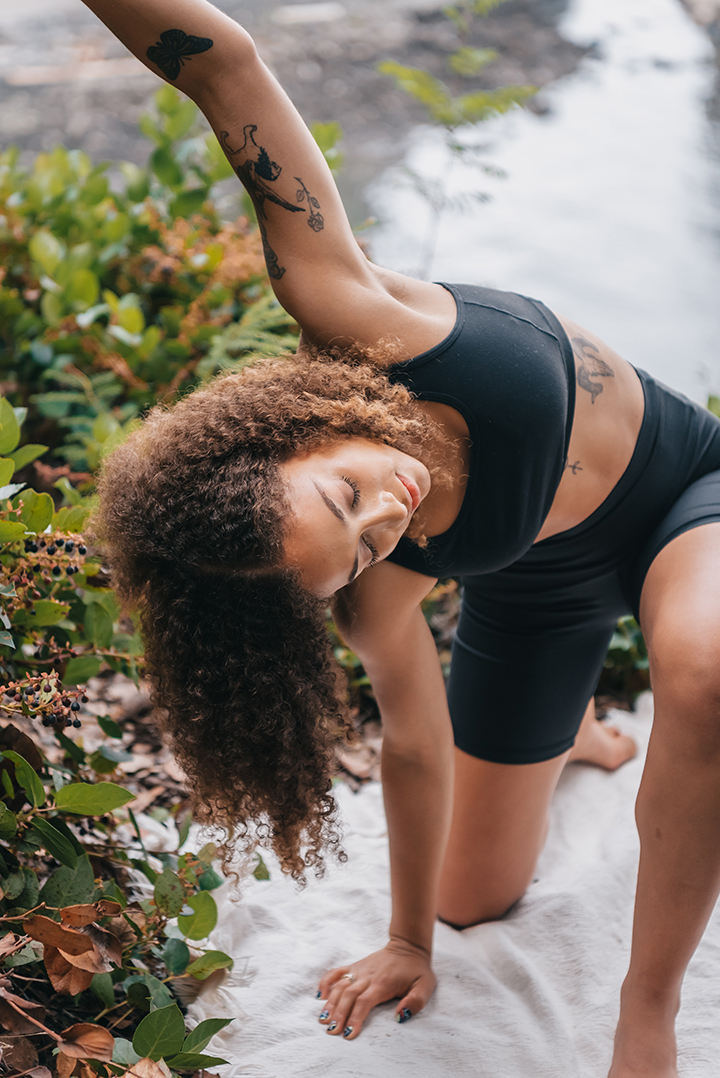
Of all moving meditations, yoga is the most well known and widely practiced.
Keep in mind, however, that yoga is often taught as an exercise regimen that largely overlooks the subtle energy shifts that are necessary for real deep and lasting healing and transformation.
That said, many people come to yoga for the physical benefits and find themselves sticking with it because of the mental and spiritual enhancements it gives them in their lived experience.
And even if you just do a form of moving meditation for its physical benefits and find the more woo-woo aspects off putting, exercise has been proven to lower anxiety levels.
So no matter what your motivation, you’re still going to benefit by practicing a form of moving meditation.
7. Mindfulness for Anxiety
Mindfulness, also called present awareness, is the backdrop to all of these different techniques.
The word “mindfulness,” however, is really a misnomer, because if anything, when you practice present awareness, you’re practicing mind-less-ness, or mind-emptiness.
Related: Mindfulness for Anxiety—How to It Works, and What to Do When It Doesn’t
The idea is to come fully into the present moment without mental interpretation.
Jon Kabat-Zinn, the professor emeritus of medicine at the University of Massachusetts Medical School, popularized mindfulness meditation and mindfulness based stress reduction (MBSR) in the 1970’s and 80’s.
And one of the techniques he recommends people start with to reduce stress and anxiety is to “come to your senses.”
In other words, shift your focus from the chatter in your mind to the experience your senses are offering you, right here, right now.
What are you seeing?
What colors, textures, shadows, movements are you observing with your eyes?
What are you smelling?
What can you hear right now, in this moment where you are?
What tastes are lingering in your mouth?
What textures, temperatures, or other sensations are your hands, feet, and the rest of your body picking up on?
The Buddhist monk, Thich Nhat Hanh, also taught many of the techniques discussed in this article.
But the one that he’s most famous for is mindful walking meditation.
“We do not practice mindful walking to eradicate our pain. We use the energy of mindfulness to be in better contact with our feelings and emotions and to learn how to accept them,” he explains in his book, Walking Meditation: Easy Steps to Mindfulness.
“By practicing mindful breathing and walking, both your mind and body will naturally become lighter, calmer, and clearer.”
Walking can be used as a form of moving meditation.
But instead of doing specific forms with your body, as in other moving meditations, walking meditation simply means you walk mindfully.
Slow down a bit so you can focus better, but not so slow that you feel weird being in public.
Shift your attention to the soles of your feet as they connect with the earth.
Take one step forward and “kiss the ground with your feet,” as Thay used to say, noticing how it feels as your weight shifts from one foot to another.
You can also combine this with breathing focus and mantra.
The wonderful thing about mindfulness/present awareness is that it can be done anywhere, at any time.
Try doing the dishes mindfully.
Ground yourself in your feet, then bring your attention to your senses as the water runs over your hands and the scents and texture of the soap come into your awareness.
Brush your teeth mindfully (and you’ll be amazed at how much cleaner your mouth feels afterward!)
Sit and drink a cup of tea mindfully.
As you become more experienced you can start engaging with others from a place of mindfulness as well.
The versatility and applicability of this practice in everyday life is what makes it so appealing.
Especially if the idea of a seated or silent meditation makes you want to squirm.
Mindfulness is both a great place to start your meditation practice, and also a great way to carry your established practice further.
Because meditation isn’t meant to just be practiced on the mat.
It’s meant to reverberate throughout every aspect of your life.
And the reason mindfulness is such a powerful practice for anxiety is that it allows you to turn down the volume and perceived seriousness of your thoughts and fully engage with your life as you are living it.
Want to make mindfulness a habit? Learn more about my 14-Day Embodied Mindfulness Course here.
Anxiety happens when we project our stress and traumas from the past into the future.
We imagine what might happen in the future as a means to try to avoid repeating the pain we’ve experienced.
By bringing your focus into the present moment where you are safe, you begin to train your mind to let go of those anxious thoughts more easily.
And when truly distressing situations do come into your life experience, (and it’s inevitable that they will,) you’ll have an easier time witnessing your emotional reactions without letting your mind make them feel worse than they are.
The one thing you have to realize is that if you want to use meditation for anxiety, it’s going to take some time and dedication.
Because over time, meditation literally changes your brain.
And it’s only through regular repetition that the neural pathways in your nervous system can reconfigure themselves to change your dominant experience from stressed to relaxed.
The same is true for most energetic shifts as well.
Some people get a taste of the profound shifts that can happen through meditation right away.
But for many people it takes time to first be able to even perceive the life force energy (aka qi, or prana) that is flowing through and animating their body.
And it takes even longer for that conscious awareness to build enough momentum to break through old patterning.
Eventually, everyone does experience a shift in consciousness, energy, and stress levels.
For some people the shift is gradual and almost imperceptible.
Others have peak experiences of awakening that are so impactful that they’re never the same again.
But whether the effect gradual or sudden for you, regular meditation practice of any kind will eventually lead to a life with less anxiety.
This doesn’t mean anxiety will disappear entirely.
Stress will still arise in your experience.
Your mind will still make up stories.
But you won’t believe everything you think.
You will become more lighthearted and discerning.
And on the rare occasion when anxiety does arise, it won’t feel as overwhelming or debilitating as it does before you began meditating.
Instead, anxiety can turn into one of your most trusted advisers, showing you the path to everything you want in life.
The thing is, you have to learn how to understand what it’s telling you.
Click here to sign up for the FREE masterclass, Decoding Anxiety, if you’d like to learn how.
But what about when meditation increases anxiety?
Believe it or not, this happens a lot.
A 2019 study published in the Journal Plos One reported a whopping 25.6% of participants experienced “particularly unpleasant meditation-related experiences.” (2)
So what does this mean?
Does meditation decrease anxiety or make it worse?
The answer is more of a yes/and/both than black and white.
Because no matter how secular you want to be, eventually meditation is going to bring you face to face with life’s most essential questions.
And this means you’re going to start to see the difference between the Truth and the belief system you’ve built up to protect the images you have of yourself.
It’s these images, in combination with your body’s natural survival instinct, that are at the root of anxiety.
And in order to heal anxiety, you’re going to have to see through and break down these images.
Which means you’re going to come face to face with the thoughts that scare you the most.
This can be extremely nerve wrecking!
Some people call this kind of experience the Dark Night of the Soul, because it can feel like your whole world comes crashing down around you.
Every strategy you turned to in the past proves to be insubstantial.
And you find yourself naked with no escape from who you really are.
But strangely enough it’s when you finally give up, when you throw up your hands and surrender to the hopelessness of the situation that you find yourself in (also known as life) that you finally find what you’ve been looking for all along.
This is how you come home.
You find that you are home, that you have been home all along, and that you are inseparable from home.
Which means you can finally relax.
You can stop trying to control life and learn to allow life to be as it is.
Most essentially, you allow yourself to be exactly as you are, with or without anxiety.
And this is what alleviates anxiety.
It’s when you arrive at this understanding that you realize not only that you are free, but that you have always been free.
As Glinda the Good Witch tells Dorothy at the end of the Wizard of Oz, “You’ve always had the power my dear, you just had to learn it for yourself.”
Most of us just have to walk through the fire for a bit before we can see it.
So if you feel like meditation is making you more anxious, don’t let it deter you!
It’s actually a sign that you’re on the right track.
It means that you’re waking up and starting to see the Truth.
And at this point it’s a good idea to get support from an experienced guide.
Someone who has walked through the fire themselves.
Someone who help you stay grounded while your world shifts, and can then teach you do it for yourself.
Could you use some extra support?
Contact me for a free consultation.
I can’t wait to see where it takes you!


